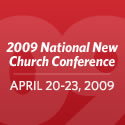
What’s Your PDP (People Development Plan)?
Orginally published on Monday, January 19, 2009 at 8:45 AM
by Todd Rhoades
Sounds like some new cholesterol count or personality profile, but its not. PDP stands for People Development Plan. Even though we’re all in the people business, practically no church in America has a PDP, at least one that is written, clearly defined, and communicated to those attending. This summer, I taught a DMin course at Denver Seminary. The theme was on developing people, a take off from my latest book, Me To We (shameless plug). What dawned on me as I prepared to teach the course is that I’ve never seen a clearly defined people development plan in a church.
Sure, there are mission statements with cute acrostics or alliterations galore, not to mention baseball diamonds with four tier meetings to attend, but a people development plan is different. One of the closest examples of this is Willow Creek’s “Reveal” project that seeks to measure congregant satisfaction, growth, and appropriate response in terms of events and programs.
We’re a lot like the classic Peanuts cartoon, where Charlie Brown shoots arrows into the fence and then draws circles around them. “That’s no way to target shoot,” Linus critiques. “Yeah, but that way I never miss,” Charlie retorts. At the end of the ministry year, most of us draw circles around our previous year’s calendar, budget, staff, and ministry review. But what are we really accomplishing? How do newcomers know what to expect? What kind of people are we turning out? Are the people in our care experiencing spiritual growth? If we think so, how do we know?
Here are 4 keys to consider when formulating a PDP:
1. Begin with the end in mind. What kind of person do you want to “produce” in your church in 1, 5, 10 years? What should parents expect if they invest their kids to the care of your youth ministries? Determine this and then work backwards. Are lessons helter skelter or is there some sort of master plan? One place to begin is Galatians 5, Matthew 28, Philippians 2, but perhaps there are other outcomes we’d want to accomplish. Specificity and objectivity are valuable here.
2. What kind of events, programs, resources and methods will accomplish these objectives? After we determine the end result, we have to think in terms of the best means for achieving these. After establishing these, we then go back and assess everything on the calendar and budget with the qualifying question: Is this going to help us get what we want? We do an awful lot of ministry stuff with limited ROI (return on investment). If it ain’t workin’, pull the plug on it or at least quit feeding it.
3. How are we going to measure progress? “By their fruit you will know them.” Can we measure growth, maturity, and Christ-likeness? We’d better figure it out. Otherwise we won’t know how we’re progressing, what’s working, and what isn’t. Sunday morning attendance and financial measure organizational growth, but not necessarily spiritual maturity. Is there something else? Jesus attracted crowds, but he didn’t seem to find much interest in maintaining them. What did he do?
4. How are we going to communicate this plan? If a visitor walked into your church today, how clear would it be what you’re striving to accomplish in his or her life? When I go to Sweet Tomatoes salad buffet, I’m greeted with a staff member and signage that tells me clearly how to begin, where to go, and what to expect. It’s a salad bar. How difficult could it be? But most churches offer far less for soul development. What if churches functioned more like Sweet Tomatoes? It starts by writing a plan instead of having a fuzzy mental assumption of what we’re all trying to accomplish.
A new year is on our door step. We’re all thinking, “Now what, more of the same or should we do things differently?” This is a great time to seriously ponder a PDP for your church that would include input from staff, lay leaders, and perhaps even an outsider or two. Plan the work and then work the plan. So, what’s your PDP?
 Alan E. Nelson, Ed.D. is a leadership development specialist and author of a fourteen books for pastors and church leaders. To find out more about him go to www.alanenelson.com or his work in raising future leaders at www.kidlead.com. The Nelsons live near Monterey, CA.
Alan E. Nelson, Ed.D. is a leadership development specialist and author of a fourteen books for pastors and church leaders. To find out more about him go to www.alanenelson.com or his work in raising future leaders at www.kidlead.com. The Nelsons live near Monterey, CA.
![]()
This post has been viewed 820 times so far.
There are 5 Comments:

Hi... I'm Todd Rhoades. I'm a Christ-follower, husband, father and I love to connect leaders with other leaders. Hopefully you'll find something here at MMI you like and will return often. If you want, you can find out more about me or follow my every step on Twitter.
![]()







-
Posted by Baby Showers
Thursday, January 29, 2009 at 12:27 AM
-
Posted by ...sara
Wednesday, March 25, 2009 at 6:22 PM
-
Posted by
Tuesday, April 07, 2009 at 10:52 PM
-
Posted by wholesale jewelry
Monday, April 20, 2009 at 3:34 AM
-
Posted by show de magia fiestas
Saturday, May 02, 2009 at 10:07 AM
Post Your Comments:I really liked the end of point 2 - “or quit feeding it” I’ve been amazed how many times failing programs have stepped up and become successful on their own after their funding has been pulled.
Love the Blog!
casininio casino online Casino online between85
We provide cheap wow gold,wow gold,wow gold guide,world of warcraft gold. Full Stock Speedy WoW Gold Delivery,24/7 Top Service Support.cheap wow gold to each loyal and reliable customer, each of them is able to buy wow gold here.!
The man is so good!
That dude in the pic...there’s something about him.
I don’t mean him, i mean his attitude.
His shaking my hand, he’s reaching out to shake my hand...i don’t know. Something looks fishy to me.
Page 1 of 1 pages